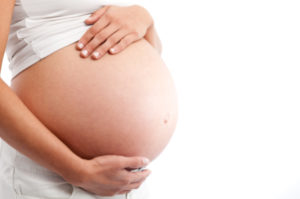 Avoid unnecessary ultrasounds because there is an effect on the fetus, even if it's just a temporary effect. Medical associations warn against getting ultrasounds during pregnancy without a real reason. From The Atlantic:
Avoid unnecessary ultrasounds because there is an effect on the fetus, even if it's just a temporary effect. Medical associations warn against getting ultrasounds during pregnancy without a real reason. From The Atlantic:
FDA Warning: Stay Away From 'Keepsake' Ultrasounds
The medically unnecessary scans peddled by businesses—often set up in malls and administered by people with no healthcare training—may pose a health risk to both fetus and mother.
Despite repeated warnings by the Food and Drug Administration over the years, commercial ultrasound businesses—often set up in shopping malls and run by untrained technicians—continue to offer their services to expectant parents. And consumers, despite the FDA’s pleas, continue to pay for them, shelling out hundreds of dollars for photos or videos of their developing fetus (and fueling a thriving Etsy niche, where ultrasound images can be turned into ultrasound cufflinks, pillows, cake toppers, and truly unsettling night lights.)
Earlier today, the agency issued the latest of a long line of alerts against non-medical ultrasounds and heartbeat monitors, reminding consumers that “both are prescription devices designed to be used by trained healthcare professionals … only when there is a medical need, based on a prescription,” and that “the FDA strongly discourages their use for creating fetal keepsake images and videos.”
Ultrasounds, which use sound waves to produce an image, are considered a safe and valuable diagnostic tool during pregnancy, when they can provide information on the fetus' age, sex, and overall health. But “ultrasound can heat tissues slightly, and in some cases, it can also produce very small bubbles in some tissues,” FDA biomedical engineer Shahram Vaezy said in the alert. Because the long-term effects of the heating are unknown, these gratuitous ultrasounds, which provide no medical information, may pose a small but unecessary risk to both mother and fetus—compounded by the fact that their duration, and the qualifications of the people administering them, aren't subject to regulation.... (Researchers have recently focused on ultrasound as a possible method of male contraception, noting that it dramatically lowers sperm count when applied to the testicles.)
Several medical groups have also come out against commercial ultrasounds over the years, including the American Medical Association, the American College of Obstetricians and Gynecologists, the American College of Radiology, the American Institute of Ultrasound in Medicine, and the American Pregnancy Association.
